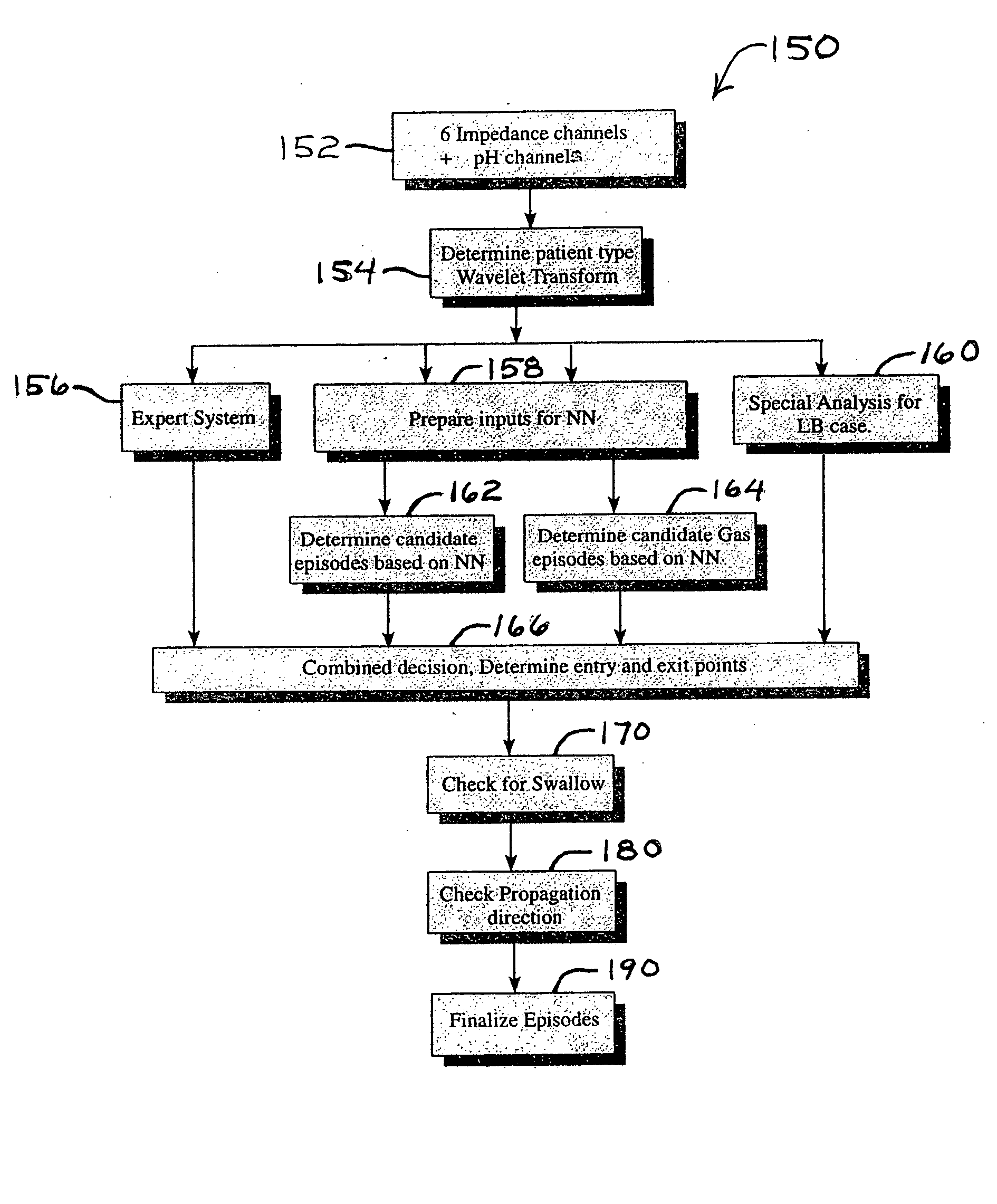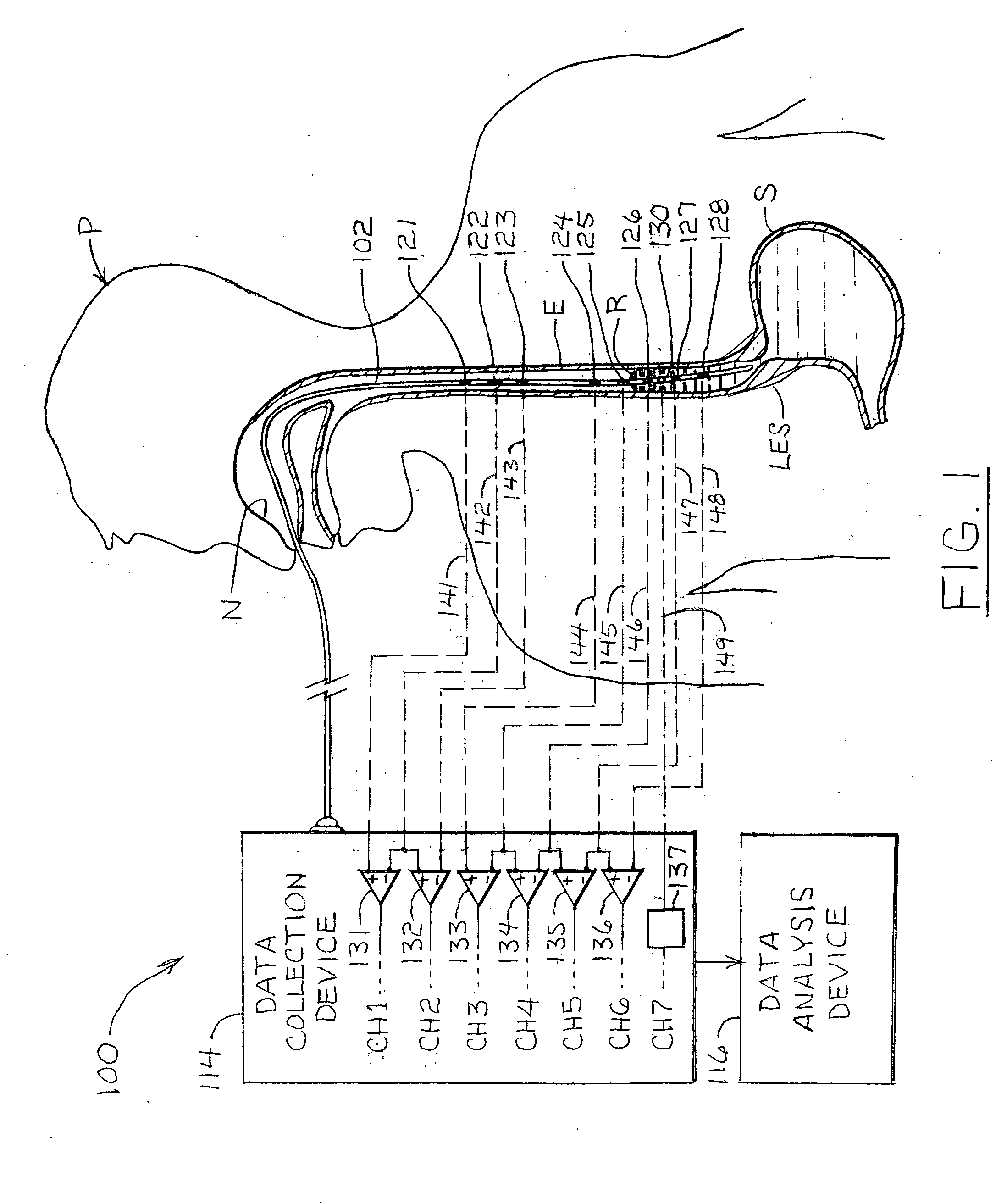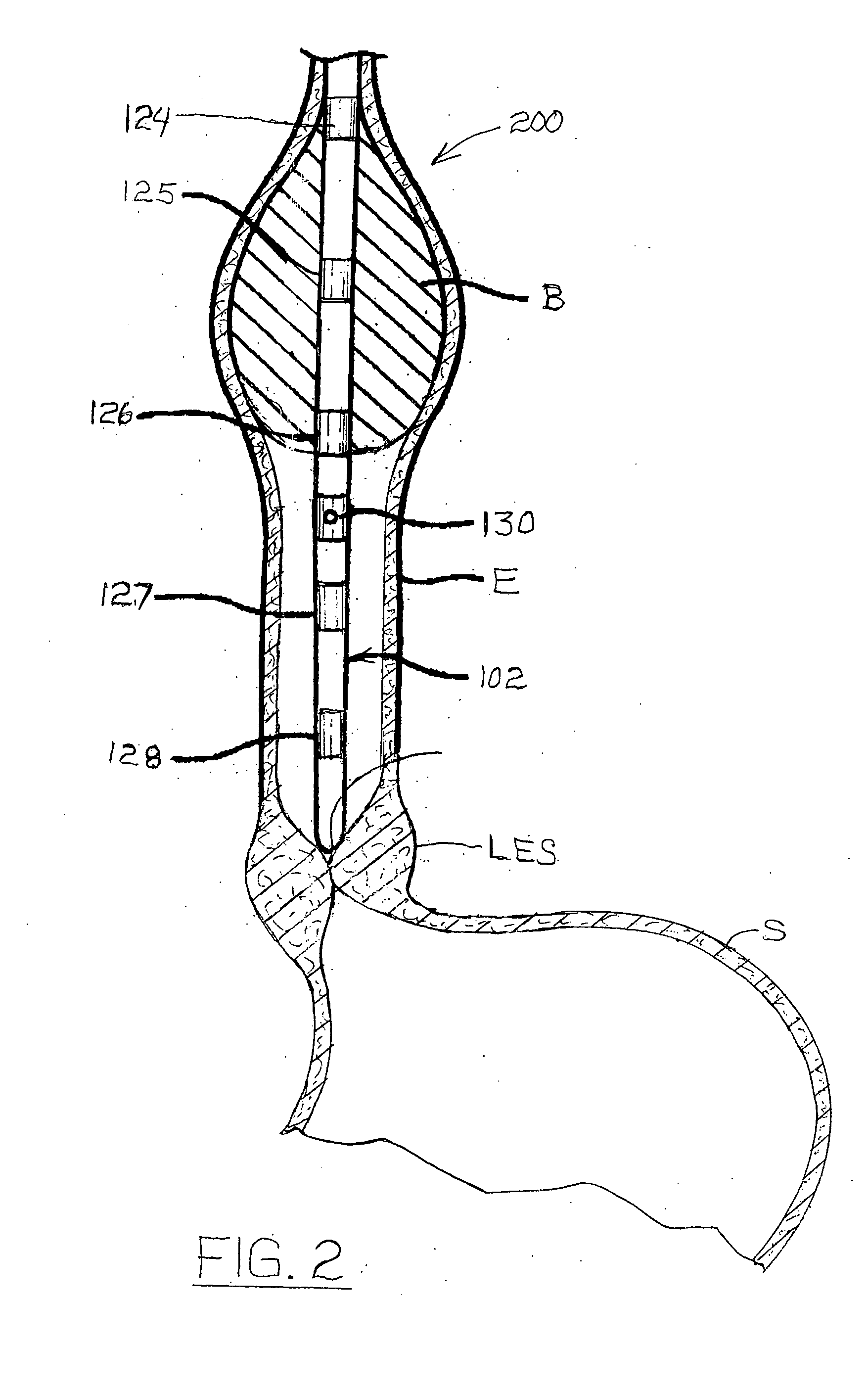Esophageal waveform analysis for detection and quantification of reflux episodes
a technology of esophageal waveform and reflux, applied in the field of gastroesophageal reflux diagnostic systems, can solve the problems of chest pain, heartburn-like pain symptoms, weak or relaxed les muscles, etc., and achieve the effect of improving the sensitivity of episode detection
- Summary
- Abstract
- Description
- Claims
- Application Information
AI Technical Summary
Benefits of technology
Problems solved by technology
Method used
Image
Examples
Embodiment Construction
A reflux data collection system 100 for collecting impedance data, that may be used in detecting esophageal reflux episodes in a patient P or other test subject according to this invention is illustrated diagrammatically in FIG. 1. Generally, the system 100, which is not part of this invention, includes a long, slender catheter or probe 102 positioned in the esophagus E of a patient or other test subject P with a plurality of impedance electrodes, e.g., electrodes 121, 122, 123, 124, 125, 126, 127, 128, dispersed in spaced-apart relation to each other along the length of the catheter 102 and connected to a data collection device 114. In general, the upper portion of the catheter 102 is referred to as the proximal portion, and the lower portion of the catheter 102 is referred to as the distal portion. Therefore, the upper electrodes 121, 122, 123 are generally called the proximal electrodes, and the lower electrodes 124, 125, 126, 127 and 128 are generally called the distal electrode...
PUM
 Login to View More
Login to View More Abstract
Description
Claims
Application Information
 Login to View More
Login to View More - R&D
- Intellectual Property
- Life Sciences
- Materials
- Tech Scout
- Unparalleled Data Quality
- Higher Quality Content
- 60% Fewer Hallucinations
Browse by: Latest US Patents, China's latest patents, Technical Efficacy Thesaurus, Application Domain, Technology Topic, Popular Technical Reports.
© 2025 PatSnap. All rights reserved.Legal|Privacy policy|Modern Slavery Act Transparency Statement|Sitemap|About US| Contact US: help@patsnap.com



